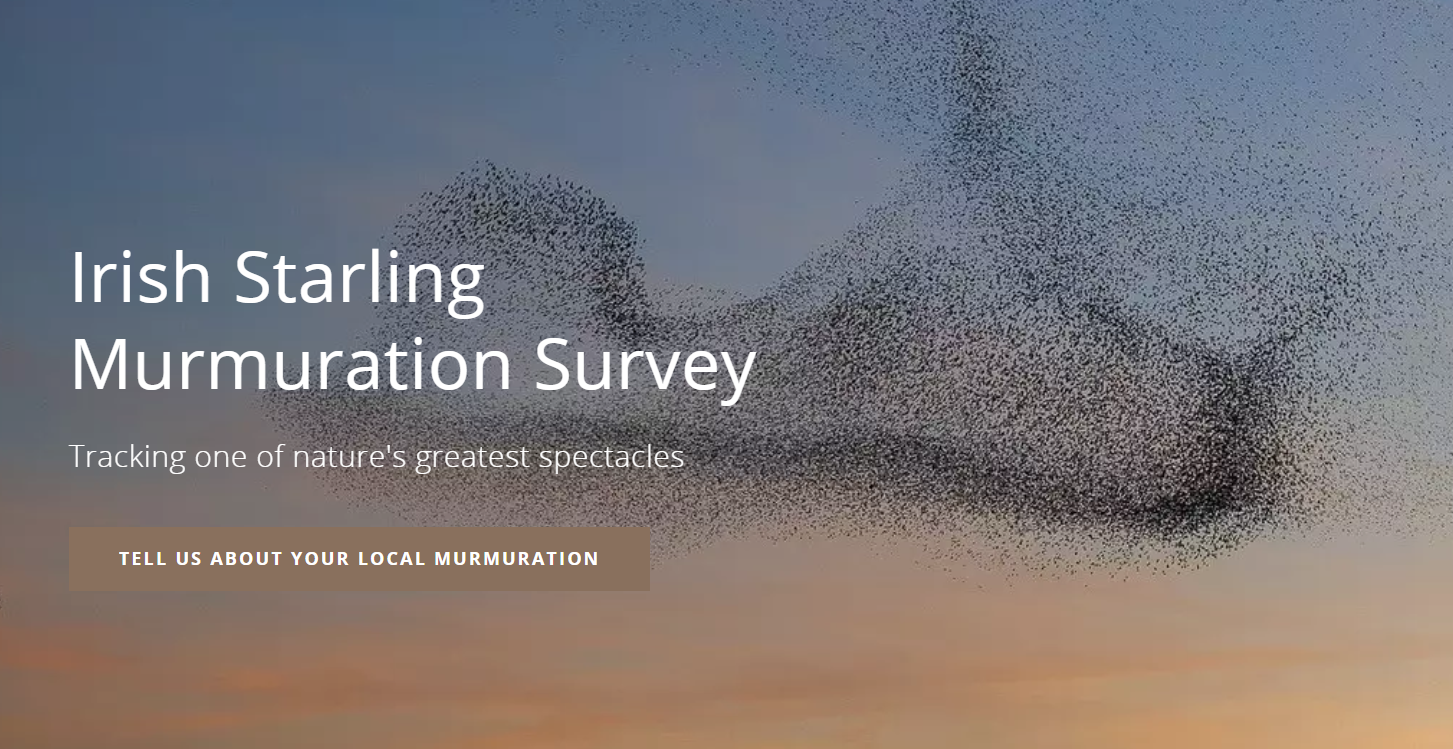If you see a Starling murmuration, please let us know below. Note that a true murmuration at a roost happens at the place the Starlings will be spending the night, so large numbers of Starlings flying over somewhere, on their way to the roost, don’t count! Similarly, we want to know about evening roost locations where these murmurations happen, so we don’t need records of large numbers of Starlings feeding during the day.
Please enter your name, location name and a rough estimate of the number of Starlings seen during your count (a rough estimate is fine – was it 1,000? or 10,000? or 30,000?), and mark the precise location of the flock within the site on the map below. We welcome repeat records from the same location at different times during the winter.
Why is it important to log records of Starling Murmurations?
Starlings perform murmurations just before they settle to roost (i.e. sleep) for the night. As well as the Starlings that nest in Ireland each summer, every winter we’re joined by hundreds of thousands of Starlings from across Northern Europe. It’s important to identify the locations and habitats they rely on at this time of year, and determine what threats they might face, so we can seek better protection for them in the winters to come.
As well as that, a Starling murmuration is an unforgettable sight and a great way for people to engage with one of nature’s most amazing spectacles in their local area. For that reason, we share the locations of Starling murmurations so that everyone can take the chance to enjoy them.
How can I find my local Starling roost?
If you don’t know where your local Starling roost is, it should be possible to find it with a bit of observation. Starlings from 30km away or more will descend on one location, often a reedbed or woodland, around sunset during the winter months. You’ll see them in their tens, hundreds, or thousands, flying overhead in the same direction each evening until they get to the roost. So, take note of which direction they’re flying when you see them, and try and find out what sort of suitable roosting habitat lies in that direction. It might take a bit of trial and error, but it’ll be very rewarding when you find it!
BirdWatch Ireland have received records of Starling roosts in almost every county over the last couple of winters, and there are plenty more out there to find. Furthermore, it might be that certain areas are used at different times of the winter each year. So, keep your eyes peeled, and tell us what you find, so we can try and understand and protect this unique natural phenomenon into the future.
Click on the survey link here
